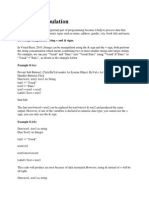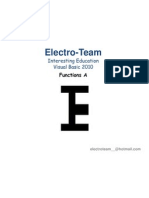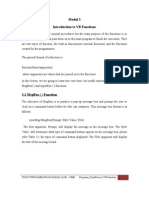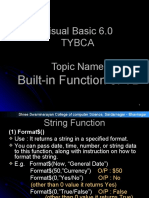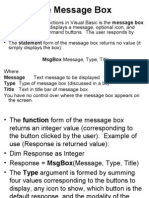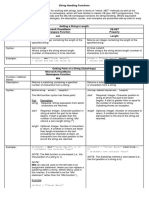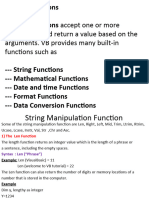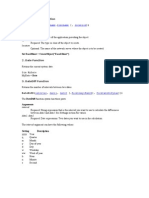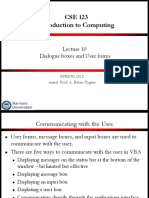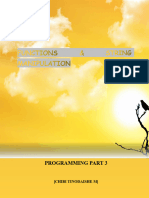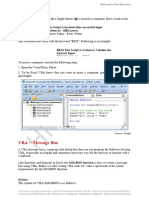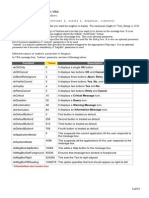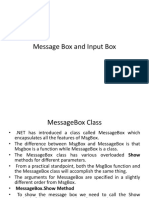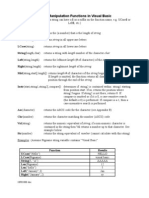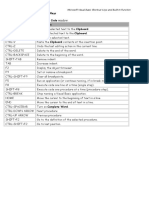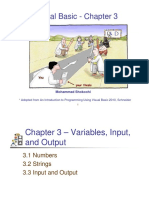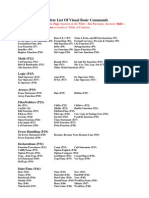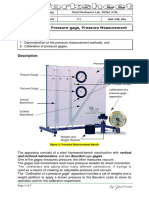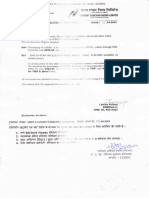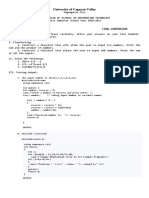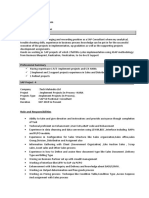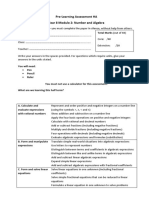0% found this document useful (0 votes)
21 views13 pagesBuilt in Functions
The document explains the concept of functions in programming, specifically focusing on the MsgBox() and InputBox() functions, which are used to display messages and gather user input, respectively. It details the syntax, parameters, and return values for these functions, along with examples of their usage. Additionally, it covers various string and math functions, as well as formatting options for numbers and dates.
Uploaded by
kmnlali8Copyright
© © All Rights Reserved
We take content rights seriously. If you suspect this is your content, claim it here.
Available Formats
Download as DOCX, PDF, TXT or read online on Scribd
0% found this document useful (0 votes)
21 views13 pagesBuilt in Functions
The document explains the concept of functions in programming, specifically focusing on the MsgBox() and InputBox() functions, which are used to display messages and gather user input, respectively. It details the syntax, parameters, and return values for these functions, along with examples of their usage. Additionally, it covers various string and math functions, as well as formatting options for numbers and dates.
Uploaded by
kmnlali8Copyright
© © All Rights Reserved
We take content rights seriously. If you suspect this is your content, claim it here.
Available Formats
Download as DOCX, PDF, TXT or read online on Scribd
/ 13

